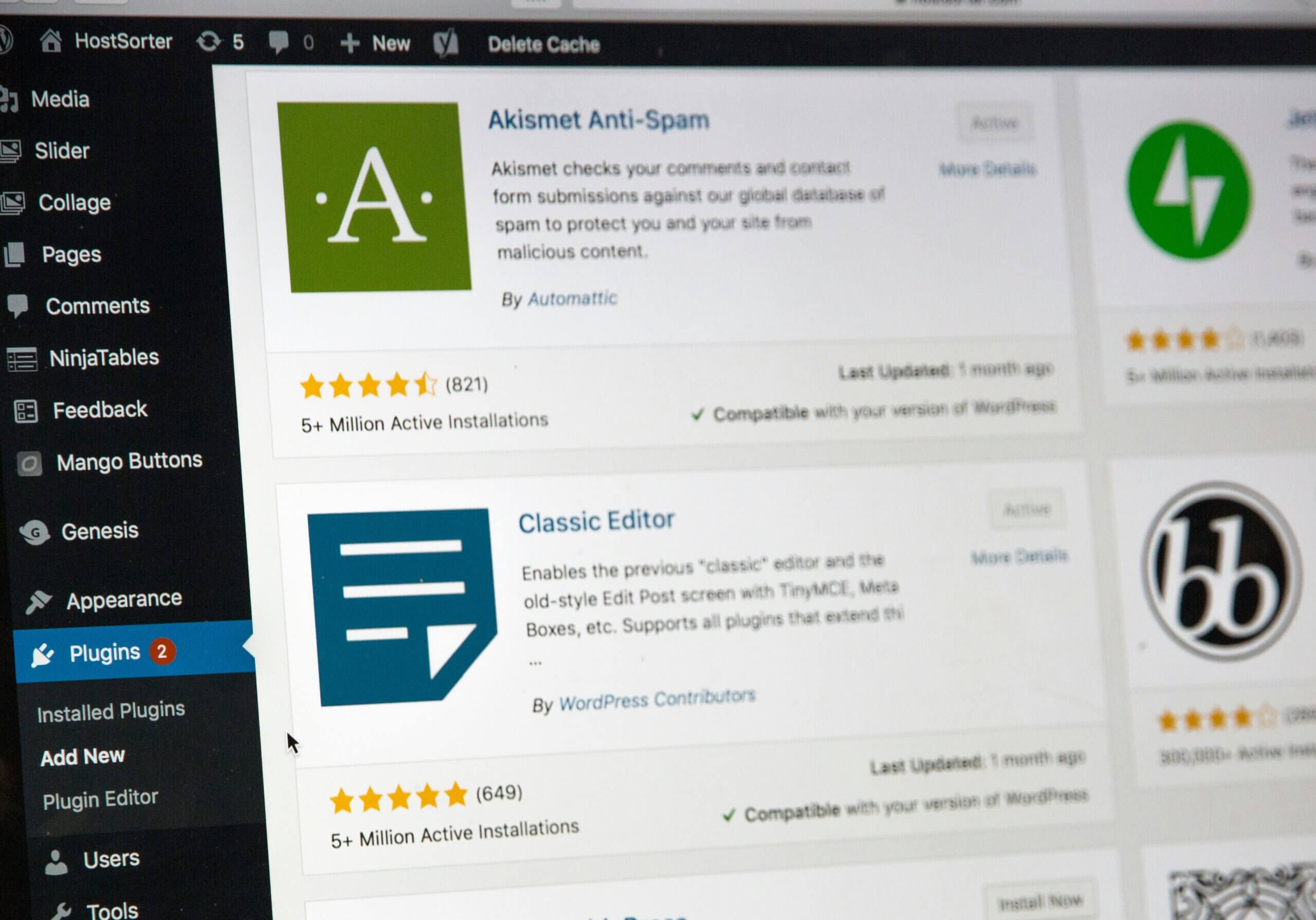Introduction
In today’s digital landscape, service-based businesses must prioritize search engine optimization (SEO) to enhance their online presence. Central to this effort is keyword research, a critical component that influences how businesses are discovered by potential clients. This blog post will explore effective strategies for conducting keyword research, offering insights into tools and techniques that can drive traffic and conversions for service-based businesses.
What is Keyword Research?
Keyword research involves identifying and analyzing the search terms that users enter into search engines. This process is essential for understanding user intent and creating content that aligns with what potential customers are searching for.
Why is Keyword Research Important?
- Proper keyword optimization helps content rank higher on search engine results pages (SERPs).
- Targeting relevant keywords ensures that content meets the needs of the audience.
- Aligning content with user search intent attracts more visitors to a website.
A Few Concepts in Keyword Research
- Semantic SEO: Focuses on understanding the context and intent behind search queries.
- Keyword Intent: Differentiates between informational, navigational, and transactional searches.
- Topic Clusters: Groups related content around a central theme to improve SEO and user experience.
Tools for Keyword Research
Before exploring the tools, it’s important to understand the mindset of your audience and how to effectively use the tools themselves. Balancing the weight between commercial, purchasing, or informative keywords is pretty important as well. Here are some top tools for keyword research:
- SEMrush: Known for its comprehensive keyword analysis capabilities. A popular part of this software is the Keyword Magic Tool, which helps users discover new keyword opportunities.
- Ahrefs: Offers insights into competitors’ keywords and backlink strategies. The Keywords Explorer provides detailed keyword metrics.
- Ubersuggest: Provides keyword suggestions and search volume data. Its Keyword Ideas tool is useful for finding long-tail keywords.
- Google Analytics & Search Console: Essential for understanding website traffic and current keyword and page performance.
- Keywords Everywhere Plugin: Helps find keyword data directly from search engine pages.
- HubSpot Blog Idea Generator: Assists in brainstorming content ideas based on keywords.
- All in One SEO Plugin for WordPress: Features a rich-snippet generator to enhance search visibility.

Understanding the Ideal Customer Profile (ICP)
An Ideal Customer Profile (ICP), also known as an Ideal Customer Avatar, is a detailed description of the perfect customer for your business. It includes demographics, psychographics, buying behaviors, and goals. Having a clear ICP helps businesses tailor their marketing strategies and content to attract and engage the right audience.
If you don’t have an ICP, you can use AI tools like ChatGPT to generate one. Depending on your level of prompt engineering, you can create a decent customer profile with most popular LLMs. Here’s a simple prompt to get started:
“Create an ideal customer profile for a [insert what you do] business looking to improve online visibility in [insert your area]. [add any additional details here to help improve the output]”
Using ICP in Keyword Research
Once you have your ICP, you can use it to guide your keyword research. Here’s how:
- Identify Challenges and Goals: Understand the challenges and objectives of your ideal customers.
- Different keywords signal different stages of the customer journey.
- Use AI tools to explore forums and discussions related to your industry. This can help identify the language and terms your target audience uses, allowing you to align your content more closely with their needs.
SEO and Keywords Example
When you’re doing keyword research for your business, it’s important to know the difference between primary, secondary, and long-tail keywords. Let’s look at an example using a landscaping business in Modesto that wants to attract more customers.
Primary Keyword: “landscape design Modesto”
This is the main keyword. It’s like the main topic of a book. It tells people exactly what the business does and where it’s located. If someone searches for “landscape design Modesto,” they’re probably looking for a landscaping service in that area.
Secondary Keywords: “garden landscaping ideas,” “outdoor design services”
These are like the chapters in a book that give more details. They are related to the main keyword but cover different aspects of the service. Someone might search for “garden landscaping ideas” if they’re looking for inspiration, or “outdoor design services” if they want a broader range of services.
Long-Tail Keywords: “affordable landscape design services in Modesto,” “custom garden landscaping ideas Modesto”
These are more specific, like a detailed section in a chapter. They tell you exactly what someone is looking for, like affordable services or custom ideas. Even though fewer people search for these terms, the ones who do are more likely to become customers because they know exactly what they want.
User Intent and Goals
Understanding user intent is crucial in keyword research. It helps businesses tailor their content to match what users are looking for, which can boost customer engagement and conversions. Let’s explore this with a landscaping example:
- Example 1: A landscaping business in Modesto might target the keyword “emergency tree removal Modesto” to capture users who need immediate assistance. This indicates a transactional intent because the user is likely ready to hire a service right away.
- Example 2: The same business might target “how to maintain a healthy lawn” to attract users who are seeking information and tips. This indicates an informational intent, as the user is looking to learn more rather than make an immediate purchase.
By recognizing these differences in intent, the landscaping business can create content that effectively meets the needs of their audience, whether they’re ready to buy or just gathering information. This approach helps in guiding potential customers through their buying journey.
A well-known marketer, Neil Patel, emphasizes the importance of understanding user intent, stating, “By focusing on intent, you can create content that truly resonates with your audience.” Which highlights the need to align content with what users are searching for, precisely meeting their expectations.
On the other hand, Rand Fishkin, a seasoned expert in the field of SEO, cautions against over-reliance on keyword tools. He suggests, “Tools are helpful, but they can’t replace the nuanced understanding of your audience’s needs.” This perspective underscores the importance of balancing data-driven insights with a deep understanding of customer behavior.
My Keyword Process
When conducting keyword research, I use a combination of tools and techniques to gain a comprehensive understanding of the target market. My go-to tool is SEMrush, which I use alongside AI to explore popular forums like Reddit. This approach helps me dive deeper into industry-specific terminology and trends.
Here’s a step-by-step breakdown of my process:
- Use SEMrush’s Keyword Magic Tool to identify potential keywords.
- Utilize AI to parse forums and gather industry-specific language.
- Keep an open document to record new target topics, overarching topics, and supporting and long-tail keywords.
- Redact any keywords that are not aligned with the services offered.
- Use SEMrush to find high-volume, high-ranking keywords with appropriate difficulty levels.
This process allows me to develop a targeted keyword strategy that aligns with a business’ objectives.
Resources and SEO Tips
Effective keyword research requires a combination of the right tools and strategies. By leveraging these resources, businesses can enhance their SEO efforts and achieve better results.
- Google’s Keyword Planner and AnswerThePublic offer valuable insights for keyword research.
- YouTube channels like Moz and Brian Dean provide practical SEO tips.
- Optimize for local search by including location-specific keywords.
- Ensure that content is informative, engaging, and aligned with user intent.
Research and Data
When conducting keyword research, it’s important to consider metrics such as search volume and cost per click (CPC). Here’s why these metrics matter:
- Search Volume: Indicates the number of searches for a keyword. Higher volume suggests greater interest but may also mean more competition.
- Cost Per Click (CPC): Represents the cost of running ads for a keyword. High CPC indicates that other businesses are willing to pay more to rank for that keyword, suggesting strong commercial intent.
Engaging the Audience
To engage your audience, focus on finding the specific language used by the industry you’re targeting. As Alex Cattoni might say, this “phraseology” serves as a starting point for understanding how people approach language and make purchasing decisions.
AI is revolutionizing keyword research by enabling faster and more accurate analysis of search data. By using AI to parse forums and gather niche-specific terminology, businesses can gain deeper insights into customer language and preferences. I encourage you to explore AI-driven solutions to enhance their keyword research efforts.
Key Takeaways
- Keyword research is essential for improving SEO and attracting the right audience.
- Understanding user intent and using the right tools are crucial for success.
- Regularly updating and refining keyword strategies can lead to better results.
Final Thoughts
Learning to use keyword research effectively is vital for any service-based business looking to enhance its online presence. By following the strategies outlined in this blog, businesses can achieve their SEO goals and drive more traffic and conversions.
Enthusiasts should explore related topics, such as content creation and SEO best practices, to continue improving their digital marketing efforts. This blog post provides a novice exploration of keyword research strategies for service-based businesses, and I hope it helps you find a focus on your target audience’s needs.



